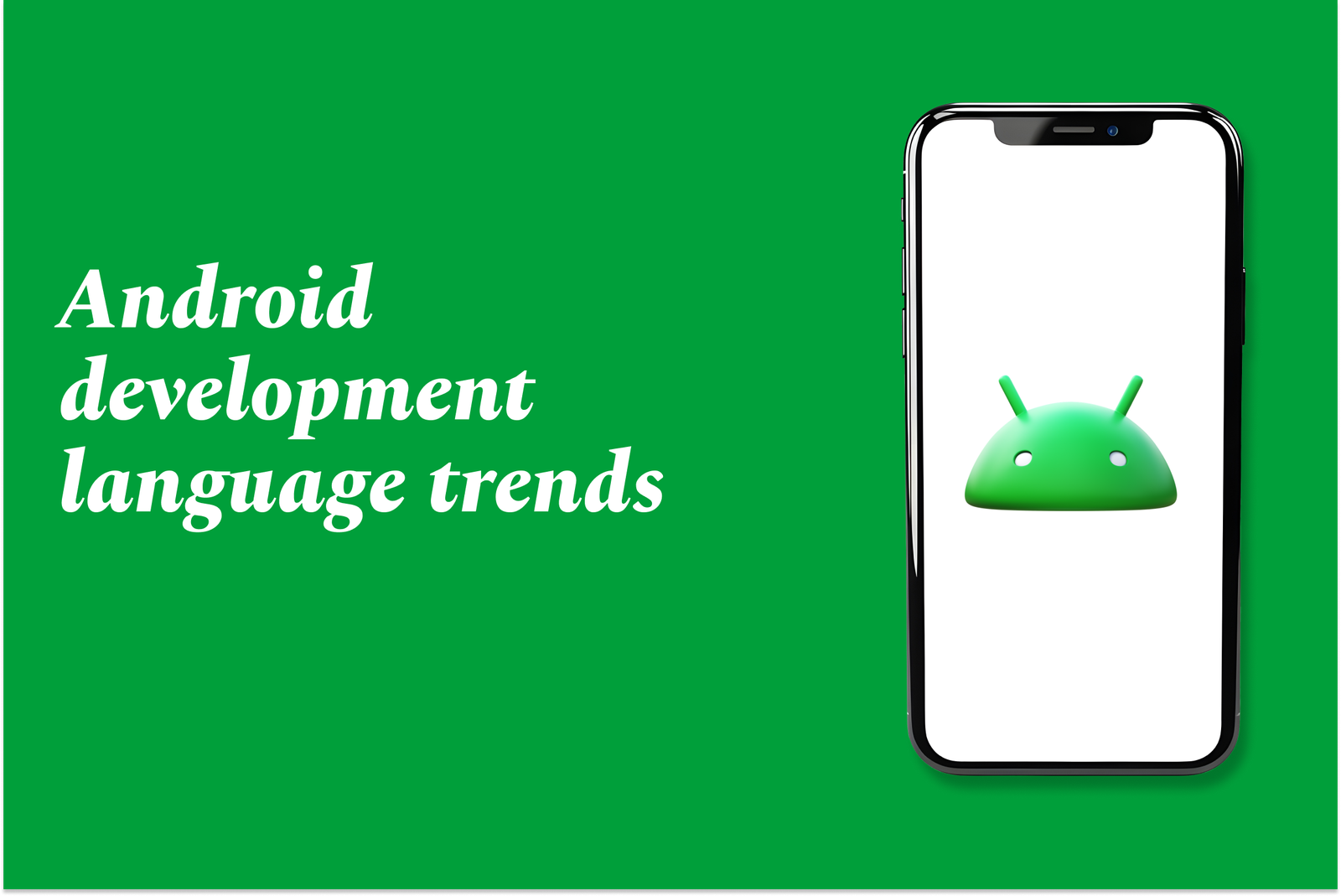Android Development Language Trends
Android development language trends show a shift from Java to Kotlin and the rise of cross-platform languages like Dart (Flutter) and Kotlin Multiplatform. Developers favor tools offering fast iteration, native performance, and support for evolving tech like foldables, AI, and instant apps.
Android Development Language Trends
1 ) Rise of Cross Platform Development Languages
Flutter, using Dart, has surged in popularity as a cross platform framework, surpassing React Native according to the 2022 Stack Overflow Survey.
Flutter is favored for its ease of learning, robust control over UI elements, support for animations, and strong Google backing ensuring Android compatibility.
React Native, based on JavaScript, remains popular with its fast refresh feature and extensive developer community, powering apps like Microsoft Office and Meta’s Facebook.
Kotlin Multiplatform allows code sharing across platforms with native performance, utilized by brands like Netflix and McDonald's.
2 ) Core Programming Language Popularity (Based on Developer Surveys)
JavaScript leads as the most popular programming language across all developer categories.
Kotlin ranks notably among professional developers as a preferred language for Android development, reflecting the shift from Java.
Other common languages for Android and mobile development include Java, C#, and increasingly Dart due to Flutter’s adoption.
3 ) Instant Apps and a Move Toward Lightweight User Experiences
Android Instant Apps allow users to access app features without installation, lowering friction and increasing user trials.
This modular approach lets apps be streamed via URL, improving user acquisition and engagement by avoiding mandatory downloads.
4 ) Trends in User Interface and Hardware Adaptation
Support for foldable devices demands developers ensure apps adapt seamlessly to varied screen formats.
Voice User Interfaces (VUIs) and integration with AI are rising trends influencing app development language and frameworks.
5 ) Integration with Emerging Technologies
Increasing integration with IoT, cloud services, machine learning, AI, augmented reality (AR), and virtual reality (VR) are influencing development language choices.
Developers are seeking languages and tools that provide native performance along with support for these cutting edge features.
Summary
The Android development landscape is shifting towards cross platform languages like Flutter (Dart) and Kotlin Multiplatform, driven by the need for efficient code reuse and superior UI control. While Java and JavaScript maintain relevance, languages supporting fast iteration and modern UI capabilities are preferred. Trends such as instant apps and adaptations for new hardware like foldables highlight the evolving demands on Android apps. Moreover, the growing incorporation of AI, AR, and cloud services calls for versatile development languages that can handle native performance and advanced features, shaping the future of Android app development.
https://justacademy.in/news-detail/android-tv-updates-and-new-apps
https://justacademy.in/news-detail/flutter-sdk-updates-in-july-2025
https://justacademy.in/news-detail/adaptive-ui-in-flutter-4.0
https://justacademy.in/news-detail/flutter-internships-&-mentorships-2025
https://justacademy.in/news-detail/top-flutter-packages-to-use-in-2025
Related Posts
Java supports GDPR and data privacy by enabling secure data handling through encryption, controlled access, and precise data management. It allows developers to minimize PII exposure, ensure data confidentiality, and design workflows that comply with data protection regulations effectively.
Java code quality tools have evolved to include advanced static analysis, integrated security checks, and AI-powered code reviews. These updates help developers detect bugs, enforce coding standards, and enhance security, streamlining the development process and improving overall code reliability.
Java remains a cornerstone in big tech companies, evolving with modern features like records, pattern matching, and virtual threads. Its robust ecosystem, enhanced performance, and growing AI integrations keep it vital for both legacy systems and innovative new projects.
Java and CI/CD pipeline optimizations streamline Java application development by automating builds, tests, and deployments. They improve efficiency through parallelization, caching, and secure secrets management, enabling faster feedback loops and more reliable, scalable software delivery.
Java supports modern cryptography standards through its flexible Java Cryptography Architecture (JCA), enabling integration of advanced algorithms like AES, EdDSA, and post-quantum tools. Libraries like Bouncy Castle offer FIPS-certified, hardware-accelerated implementations for secure development.
Java 23 enhances record patterns by enabling concise, direct destructuring of record components within pattern matching, simplifying type checks and data extraction. This improvement boosts code readability and expressiveness by reducing boilerplate in handling immutable data classes.
Java remains a top choice for mobile app backends, powering scalable, secure, and high-performance server-side solutions. Latest trends include cloud-native microservices, reactive programming, and enhanced JVM optimizations, enabling efficient, flexible, and robust mobile backend development.
Java SE 24 and LTS Java SE 21 offer enhanced features and performance, while Apache Spark 4.0.0 introduces Scala 2.13 support and advanced ML and SQL capabilities. Together, they empower developers to build scalable, high-performance data applications with modern tools.
JUnit 5 modernizes Java testing with a modular architecture, improved assertions, and seamless Java 8+ support. Beyond JUnit, tools like Mockito and AssertJ enhance mocking and assertions, creating a powerful, flexible ecosystem for writing clean, efficient Java unit tests.
Java plays a pivotal role in cloud automation tools by providing a robust, platform-independent language used to build scalable automation frameworks like Jenkins and Selenium, enabling efficient CI/CD pipelines, testing, and orchestration across diverse cloud environments.










